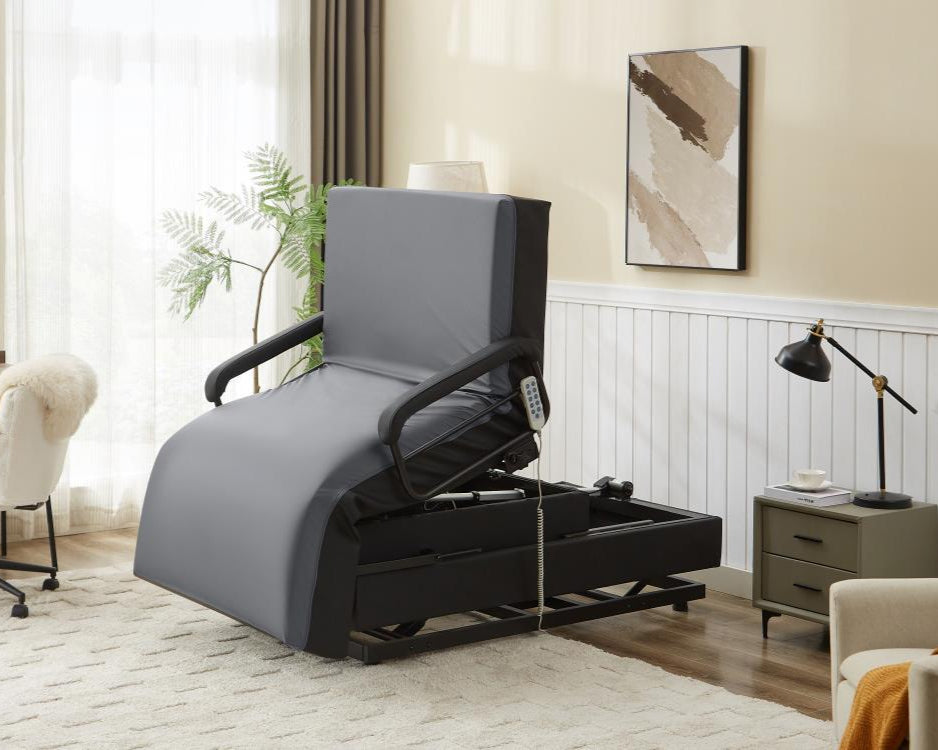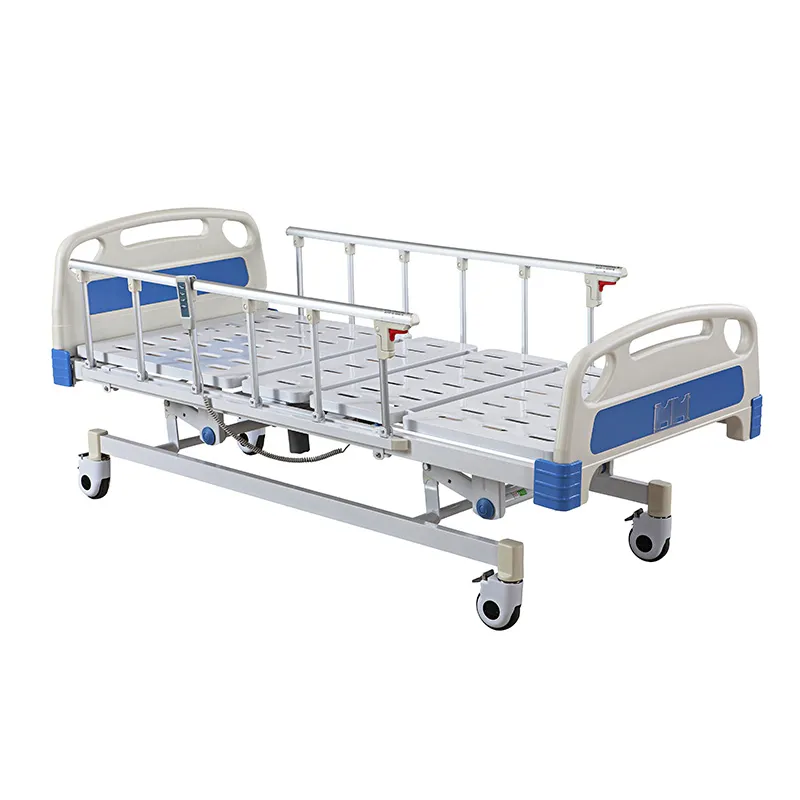The Definitive Guide to Hospital Beds For Home Use
Table of ContentsUnknown Facts About Hospital Beds For Home UseUnknown Facts About Hospital Beds For Home UseThe 7-Second Trick For Hospital Beds For Home UseThe smart Trick of Hospital Beds For Home Use That Nobody is Talking AboutThe Of Hospital Beds For Home UseFascination About Hospital Beds For Home UseFacts About Hospital Beds For Home Use Revealed
There are 3 main sorts of health center beds: guidebook, semi-electric, and fully-electric. However, even more types of medical beds exist and they are detailed below. These beds utilize hand cranks to readjust the bed's elevation and increase and lower the head and the foot. Hand cranks are commonly discovered at the foot of the bed and require an individual that is physically efficient in operating.
Semi-electric beds have an electrical motor to raise and lower the head and foot sections of the bed. Clients and caretakers readjust the positioning by pushing buttons making use of a hand pendant. The elevation of the bed is changed manually with a hand crank. Full-electric beds have an electrical motor that can elevate the head and foot sections of the bed as well as the whole height and positioning of the bed.
Some Known Details About Hospital Beds For Home Use
Some versions can also relocate into more settings, such as the Trendelenburg (tilt) position. There are a number of types of hospital beds, each made to satisfy certain person requirements. Here are some usual kinds: This is the most common sort of health center bed, made for general clinical use. It has a manual or electrically flexible headrest, foot rest, and elevation.
Reduced to the ground than a typical bed. This kind of bed is made for larger individuals, with a larger frame and greater weight capacity than a common bed.
This type of bed is developed for critically sick patients that call for open surveillance and specialized medical tools such as ventilators and mixture pumps. This kind of bed is developed for usage throughout labor and shipment, with flexible placements and functions to support the mom and infant during the birth process.
Everything about Hospital Beds For Home Use
Numerous feature and the accessories perform increasing grip to different parts of the vertebra and the extremities without moving the human body. These are simply a couple of examples of the kinds of health center beds available. The particular kind of bed utilized will depend on the client's problem, medical needs, and various other aspects.
Here is the thing you need to know. A one-function healthcare facility bed is a medical bed that enables a client to move just the head or foot section up or down. A 2 function healthcare facility bed usually refers to a kind of medical bed that has two flexible functions to aid people in healthcare facilities or treatment facilities.

Rumored Buzz on Hospital Beds For Home Use
A 7-function ICU bed is a sort of clinical bed that supplies a number of adjustable features to sustain seriously unwell clients in a critical care unit (ICU) (hospital beds for home use). The 7 functions typically include: Back-rest change: The backrest can be readjusted to numerous angles to assist the person stay up or relax conveniently
Elevation modification: The bed can be elevated or reduced to make it much easier for individuals to enter and out of bed, and for caregivers to give care. Trendelenburg position: The entire bed can be slanted to promote blood circulation and circulation in the body. Reverse Trendelenburg position: The bed see can likewise be tilted in the opposite instructions to advertise blood circulation and circulation in the top body.
1. What Size is a Health Center Bed? 2. How Much Does a Medical Facility Bed Expense? 3. Why Do Healthcare Facility Beds Have Side Rails? 4. What Are The Main Medical Facility Bed Components?. While even more cost effective than electrical designs, these beds require exertion for modifications. The main benefits of manual beds are their affordability and integrity, as they don't count on power. Nonetheless, the requirement for hand-operated effort can be a constraint in scenarios where quick modifications are needed or where caregivers encounter physical difficulties.
Hospital Beds For Home Use - Questions
Semi-electric medical facility beds offer an equilibrium of handbook and electrical controls. These beds provide an optimal middle ground between manual and totally electrical choices, using convenience of usage without the complete price of electrical models.
Semi-electric beds are fit for patients that need moderate changes to the head and foot areas yet can handle without regular elevation modifications. This makes them a cost-effective remedy for those seeking comfort and comfort without the need for consistent repositioning. Fully electrical healthcare facility beds feature electrical controls for seamless modifications to the elevation, head, and foot sections.
Specialty healthcare facility beds, such as ICU beds, long-lasting treatment beds, and bariatric beds, are thoroughly created to deal with particular medical requirements. These beds provide tailored treatment for diverse individual groups, boosting both end results and comfort. In the complying with sections, we will discover the primary types of specialty medical facility beds, describing their particular advantages and applications.
With years of experience in manufacturing electric direct actuators - hospital beds for home use and close cooperation with the health care market, TiMOTION is well-positioned to offer trustworthy medical care remedies. Our vertically integrated firm manages every action of the manufacturing process, from style to actuator setting up, guaranteeing we supply exceptional value and tailored services tailored to your specific needs
A Biased View of Hospital Beds For Home Use

To read more about integrating these innovations into your items, call us today. Additional analysis:.
Information is sourced from the Medicare Expense Report.

See This Report on Hospital Beds For Home Use
A health center bed is a bed made specifically for clinical purposes. It is not just a location for clients to rest, but also a system for medical procedures. Unlike regular home beds, health center beds usually have adjustable attributes, which can promote clinical personnel to make various modifications according to the demands of people, such as changing the height, disposition, and assistance angle of the back and legs of the bed.